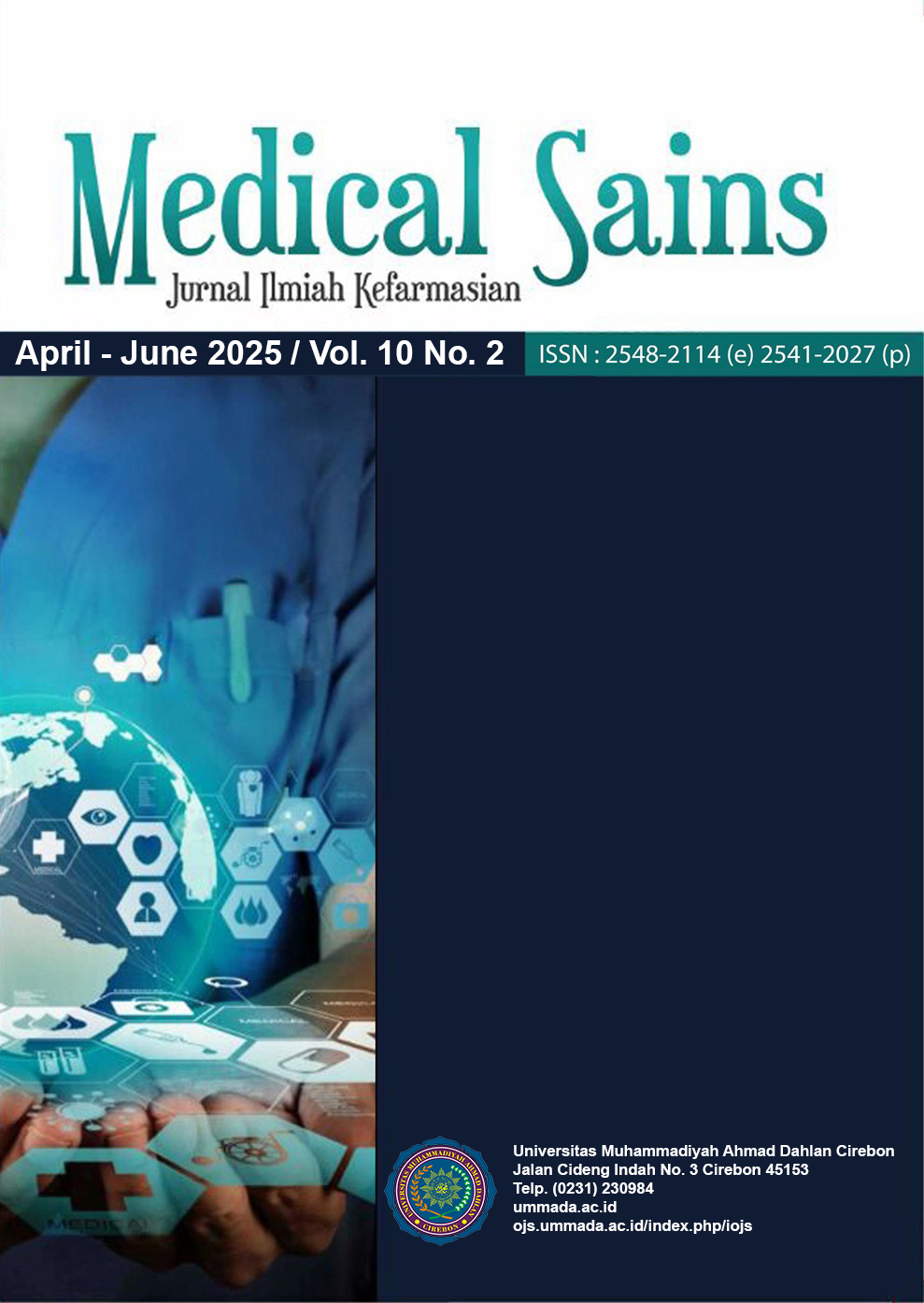ESTERIFICATION OF CINNAMIC ACID WITH OCTANOL USING ULTRASONIC WAVE ASSISTED BY COUPLING REAGENT AS ANTIERYTHEMA
Main Article Content
Abstract
The n-octyl cinnamate compound, a cinnamate ester, is believed to have antierythema activity. This compound is naturally present in certain plant species; however, its quantity is limited. Steglich esterification can be used to produce n-octyl cinnamate, which involves the reaction of cinnamic acid with n-octanol using n,n'-dicyclohexylcarbodiimide (DCC) as a coupling reagent. Ultrasonic wave-assisted synthesis was performed to reduce the synthesis time and increase the yield of n-octyl cinnamate with time variations of 3, 4, and 5 hours at ± 2°C. The synthesized compounds were characterized by organoleptic properties, solubility, melting point, TLC, FTIR, and GC-MS tests. The synthetic compound occurred as a white powder, yielding 10.1% after an optimal duration of 4 hours. The compound was insoluble in distilled water but soluble in methanol, ethanol, chloroform, ether, and n-hexane. The compound has a melting range of 135.1-145.4°C, and the TLC results obtained different Rf values than the initial compound. FTIR test analysis showed the presence of C=C aromatic, C-H aromatic, C=O ester, C-O ester, C=C aliphatic, and C-H aliphatic group absorption by the n-octyl cinnamate compound. GC-MS analysis revealed a synthetic retention time of 17.193 minutes and an abundance of 35.40%. The antierythema activity of the synthesized n-octyl cinnamate compound was optimal at 100 ppm with a %TE of 1.661, classifying it as an extra protection category.
Keywords: anti-erythema, esterification, ultrasonic waves, n-octyl cinnamate, time.
Article Details

This work is licensed under a Creative Commons Attribution-ShareAlike 4.0 International License.
